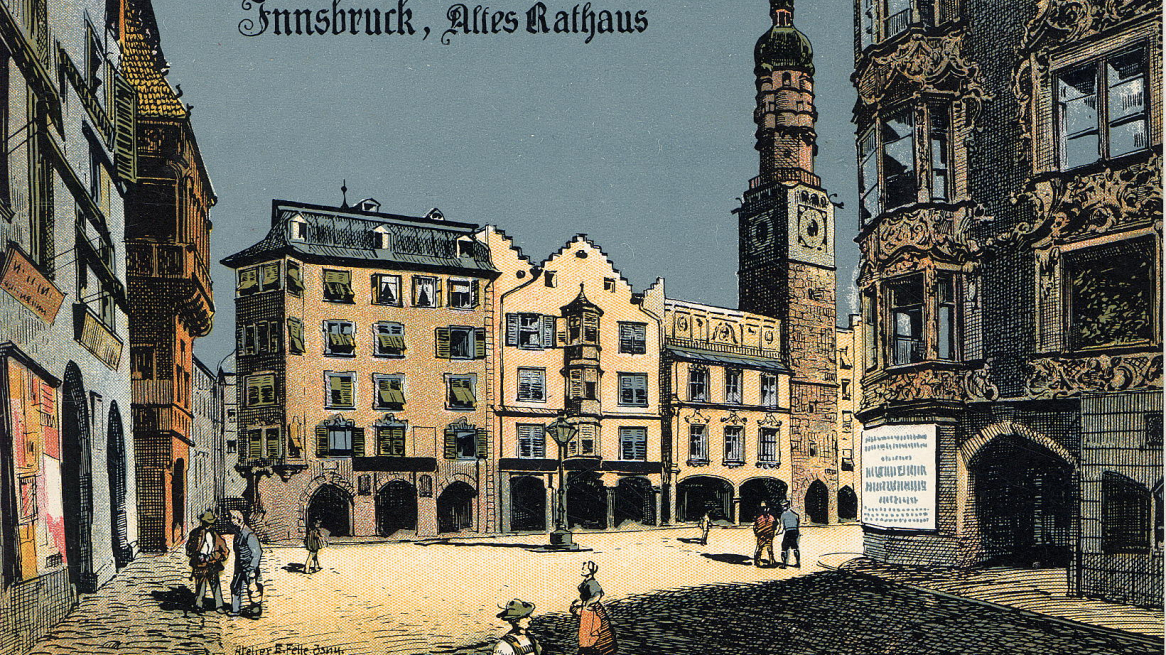
Anyone strolling through the old town likes to look up at the Goldenes Dachl, the facade of the Helblinghaus or the Nordkette, which rises behind the roofs. Look into the shop windows and into the guest gardens. Old town visitors watch others strolling - and are watched.
What very few do: Look at the ground! Unless they trip or want to avoid a puddle. I am no different. That's a pity, because the flooring also tells stories.
Underground
Flooring is perhaps less spectacular, but it is at least as important for the old town feeling as the historic walls themselves. It is not for nothing that the floor is often referred to as the fourth facade. The special thing about it is that the less noticeable it is, the more coherent it is.
For months, the renovation of the underground pipelines recently dominated the image of the old town. Deep excavation aisles stretched through the streets and alleys. What a relief it was when the work was finally finished and you no longer had to zigzag through Herzog-Friedrich-Strasse and dodge into the side streets. And yet something was different. Where the ground had been torn up, there was now asphalt. Wait a minute! Asphalt? - No more neat paving? Was it supposed to stay like that?
My concern was unfounded. The subsoil must settle after the construction work, and only then can paving work be carried out. What form this will take is currently being discussed intensively in the relevant city offices. The Federal Office for the Protection of Monuments is also involved, of course. This is because the old town is a protected zone under the City and Townscape Protection Act. Nothing may be changed here simply like that. Not even the flooring. The new , unfamiliar look prompted me to take a closer look at the floor in the old town and to look into its history.
Through the middle
For centuries, Herzog-Friedrich-Straße was Innsbruck's main thoroughfare. Whoever wanted to go from east to west, whoever wanted to go in the direction of the Brenner, drove right through the old town, past the Goldenes Dachl. The surface over which the carriages and wagons traveled had an influence on the amount of dust, noise and dirt. Early on, people began to pave the roadway with flat stream stones, sand and wooden blocks, creating protected paths for pedestrians. From the middle of the 19th century asphalt was used. For the sidewalks liked ribbed cement slabs, "to avoid slipperiness in wet weather," as stated in the Innsbrucker Nachrichten in 1873.
New flooring
With motorization, traffic in the old town also increased. With its narrow, winding streets, however, it was not equipped for this. The expansion of the Rennweg and the Südring finally relieved the strain on Herzog-Friedrich-Strasse. This lost its status as a traffic junction, and the way was cleared for a Pedestrian zone in the old town was clear. This was implemented in the 1970s. Asphalt gave way to pavement.
The work in this regard lasted until the 1990s. The paving was not uniform. Side streets received larger stone slabs, while in Herzog-Friedrich-Straße small stones were laid in the form of an arched paving. Porphyry was the preferred material, while the drainage channels were made of granite.
If one wanders attentively through the alleys, one also sees how much attention to detail has been paid. Building edges and manhole covers, for example, are lined with small ashlars.
Also state of the art at that time was a bonded construction method in which the joints were sealed with a binder. Today, an unbound construction method is preferred; it allows water to seep away and individual stones to be replaced more easily. However, the loads to be carried must be taken into account. Because even though the old town is now a pedestrian zone, there is traffic. Trucks and parcel services deliver goods, cabs may drive in. The soil material used must therefore be robust.
Coming soon
In which form the paving, which was removed during the sewerage works, should be replaced, is still being discussed by the experts. I am already curious what solutions there will be in the streets and alleys of the old town. In any case, in the future my gaze will not only lift up and fall into the displays, but also to the ground. I cannot imagine an old town without paving. It signals the quality of a stay, underlines the special character of a historic ensemble, and invites people to take a stroll. And last but not least, it tells stories.
Information on Innsbruck's old town, its history can be found at innsbruck.info
Photos, unless otherwise indicated: © Susanne Gurschler
Rate this article
Show me the location on the map
Innsbruck has captured her heart, and the view of the Nordkette mountains soothes her soul. A journalist, non-fiction author, bookworm, amateur photographer, dog owner and mountain walker #ghostsofinnsbruck
Similar articles
"If the bee disappears from the earth, humans will only have four years to live. No more…
The first time I met Isobel Cope, I was halfway through presenting my radio show Sensations in…
Click. A privacy policy like this is accepted in no time at all. Click. And the computer…
Peruvian-born Sandra Chamochumbi Castro is a member of the Limonada Dance Company, newly founded…










